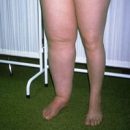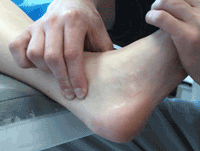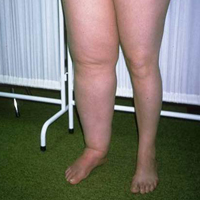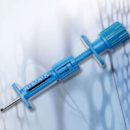Lymphedem is one of the complications of oncological diseases of the breast. The removal of affected and healthy lymph nodes during the operation leads to a violation of the outflow of lymph and the development of swelling of soft tissues.
Content
Risk factors leading to the development of lymphidem
Lymphedhem is a side effect of the treatment of breast cancer. According to various sources, with the lymphede of the upper limbs face from 20% to 80% of women who have undergone breast cancer and have already passed a full course of treatment. Unfortunately, at the beginning of the treatment, predict the exact risk of this complication is very difficult. It all depends on the state of the patient, the volume of operation and other treatment methods that will be applied after it.
The cause of the lymphidema is that during operation on the mammary gland in women, the lymph nodes are often removed during their defeat or for the prevention of cancer recurrence. The consequence of this, as well as subsequent therapy (irradiation of the axillary region radiation) is the disturbance of the outflow of lymphs from the area of the hand, which is manifested by swelling of soft tissues. This condition is not particularly dangerous or fatal, but can last long enough. Lymphedhem is a cluster of lymphs in soft tissues of the upper limb. In the field of the legs, there can also be lymphedema, but this condition is already associated with other diseases.
The mechanism for the development of lymphostasis during breast operations
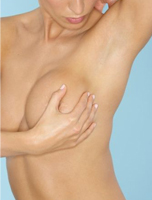 Lymph is a colorless liquid, which is as well as blood, circulates in the body. But unlike blood, it proceeds not in the arteries and veins, but in thin lymphatic vessels. Lymphic function in the body - cleansing. Cleaning the body lymphatic system occurs as follows. Lymph collects decay products and other substances from tissues and delivers them to «filters» - lymphatic nodes that are scattered throughout the human body. Ultimately, lymphatic vessels are poured into two large veins located near the heart, thus, the lymph returns to the bloodstream, where in the future it is processed and delivered to the selection authorities.
Lymph is a colorless liquid, which is as well as blood, circulates in the body. But unlike blood, it proceeds not in the arteries and veins, but in thin lymphatic vessels. Lymphic function in the body - cleansing. Cleaning the body lymphatic system occurs as follows. Lymph collects decay products and other substances from tissues and delivers them to «filters» - lymphatic nodes that are scattered throughout the human body. Ultimately, lymphatic vessels are poured into two large veins located near the heart, thus, the lymph returns to the bloodstream, where in the future it is processed and delivered to the selection authorities.
In addition to the cleansing function in Lymph, many other. It should be said that Lymph is rich in protein. Unlike the circulatory system, where blood is driven by the reductions of the heart muscle, the lymphatic system does not have such a central «pumping station». Lymph circulates due to reductions of skeletal and respiratory muscles. But this circulation is quite slow, in most parts of the body, this movement occurs against gravity, covering the entire extensive network of tiny capillaries, called lymphatic. These smallest vessels with very thin walls permeate the whole human body, but their number is especially large in subcutaneous fabric. In addition, there are valves in the lymphatic vessels that do not allow Limmfe to rescue in the opposite direction.
With surgical manipulations in the armpit area, where major regional lymph nodes are located, a doctor, removing lymph nodes, will of the will damage the lymphatic vessels. As a result, Lymph can no longer be selected from soft hand tissues and its stagnation occurs. This is manifested by the fact that lymph accumulates in the skin, adipose tissue, muscles, nerves and connective tissue. In this case, the lymphidem may affect both the arm and part of it, for example, brush, forearm or shoulder. In addition, the lymphidem may affect not only the hand, but also the chest area, on the side where the operation was carried out, since the upper outer part of the breast gives a lemon outflow into regional axillary lymph nodes.
It should be noted that some patients lymphedem can be very unfinished, so it can hardly notice, and some this state can be strongly expressed.
Operation on the removal of lymph nodes in the axillary region (in combination with the mastectomy - dairy gland removal) increases the risk of developing a certain degree of lymphedemy. The exposure of the area of the axillary lymph nodes and chemotherapy can even more increase this risk. If after the treatment of breast cancer, there is no lymphedemy, then this means that the body is still coping with the load that he is experiencing. However, in any case, it is very important to avoid the reasons that lead to the development of lymphostasis.
One of «New products» In the method of removing lymph nodes in oncology is the operation of removal of so-called signal lymph nodes. This method serves as an alternative to standard axillary lymphadenectomy. It is believed that this operation allows you to avoid serious side effects inherent in the traditional removal of lymph nodes. Unfortunately, this type of intervention is shown not to all patients suffering from breast cancer. With this technique, the surgeon removes only those lymph nodes that are really amazed. This avoids damage to entire and healthy lymphatic vessels, and, therefore, significantly reduce the risk of lymphedem.

